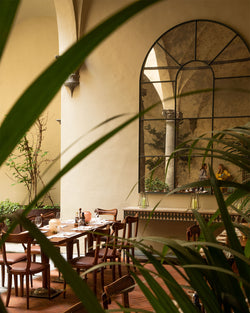I first visited Lotusland because I was in Montecito and I didn’t have anything else to do. It was a few years ago: someone had told me about it, or must have, because as a then infrequent visitor to Santa Barbara and its neighboring environs I don’t know how else I would have known to go, and anyway Lotusland is one of those places that people love to be the first to tell you about. There are only so many places where a person can go these days to have a real Stendhal moment, especially in America—Lotusland, the richly planted 37 acre Southern California oasis and horticultural extravaganza, is definitely one of those places.

On Lotusland, and the “Million Dollar Garden” that One Of the World’s Best Jewelry Collections Bought
Published on 8 minutes read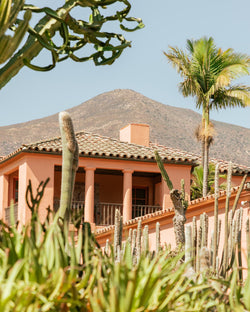
To this day, Lotusland retains one of the finest collections of cycads in the entire world.
I managed to get a ticket on short notice (also a mystery, now, when it seems tickets are always booked solidly far in advance) and was dropped off outside the unprepossessing pink-toned exterior wall, which was pleasantly authentically aged (not always the case in Montecito, with its love of faux chateaux). There were guided tours, I would learn on later visits, but I had a self-guided version, and so I decided to embark, knowing next to nothing about where I was but assuming that I would figure it out. The docent who had greeted me and handed me a map asked if I knew anything about someone named Ganna Walska. The way she asked made it seem like no visitors did, and that she felt this was a great lacking in our collective education. I smiled at her with the artificially angelic patience of someone often incorrectly believed to be under-informed and said, “yes, of course,” even though she was right, I had no idea who she was talking about. I don’t really remember why I did that, either.
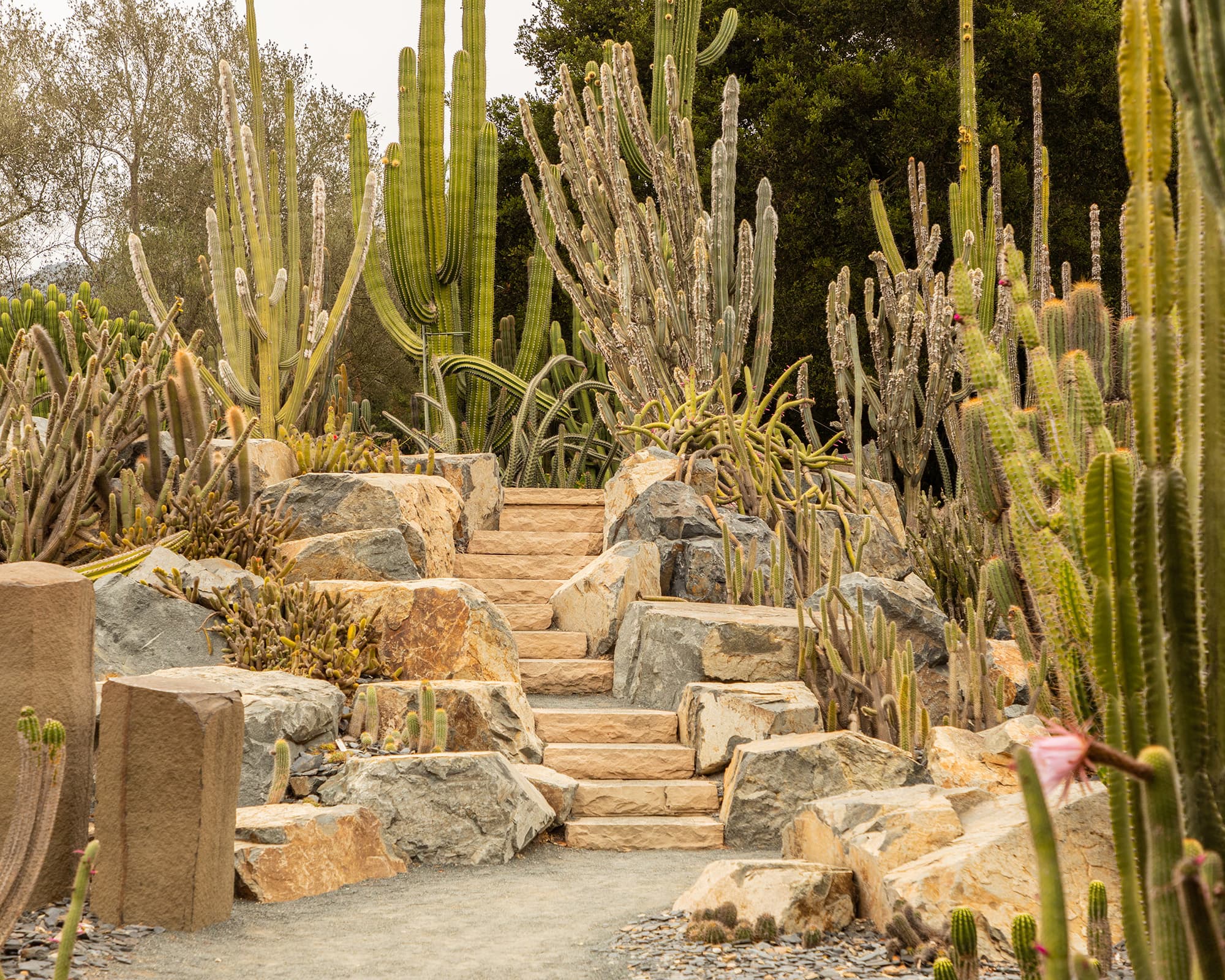
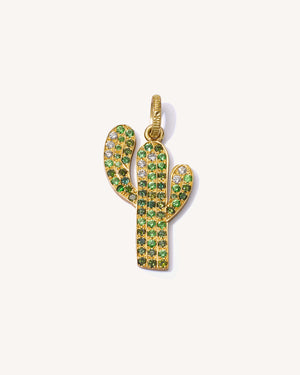
Carolina's Cactus Memory Pendant is inspired by the cacti in Montecito.
Shop nowIt became immediately clear, while wandering what revealed itself to be one of the most significant botanic gardens in the world, with its extraordinary design sensibility (you could call it a “more is more” philosophy) and more than 3,400 types of plants, gathered there for no practical purpose beyond to surprise and delight, that I did want to know more about Ganna Walska. (And so, I decided, I would, to very gratifying results, which we’ll get to in a minute.) By then I had picked up that she was the woman who had made the whole thing happen, from the cypress allée and fourteen-basin-tall wishing well, to the Dr. Seussian aloe garden, the tranquil Japanese garden with its elegant bridges and reflection pond, and the jaw-dropping collection of cacti and euphorbias. Every pathway led somewhere distinct, jaw-dropping, both inexplicable (how did all these golden barrel cacti get here?) and totally natural (where else should they be?).
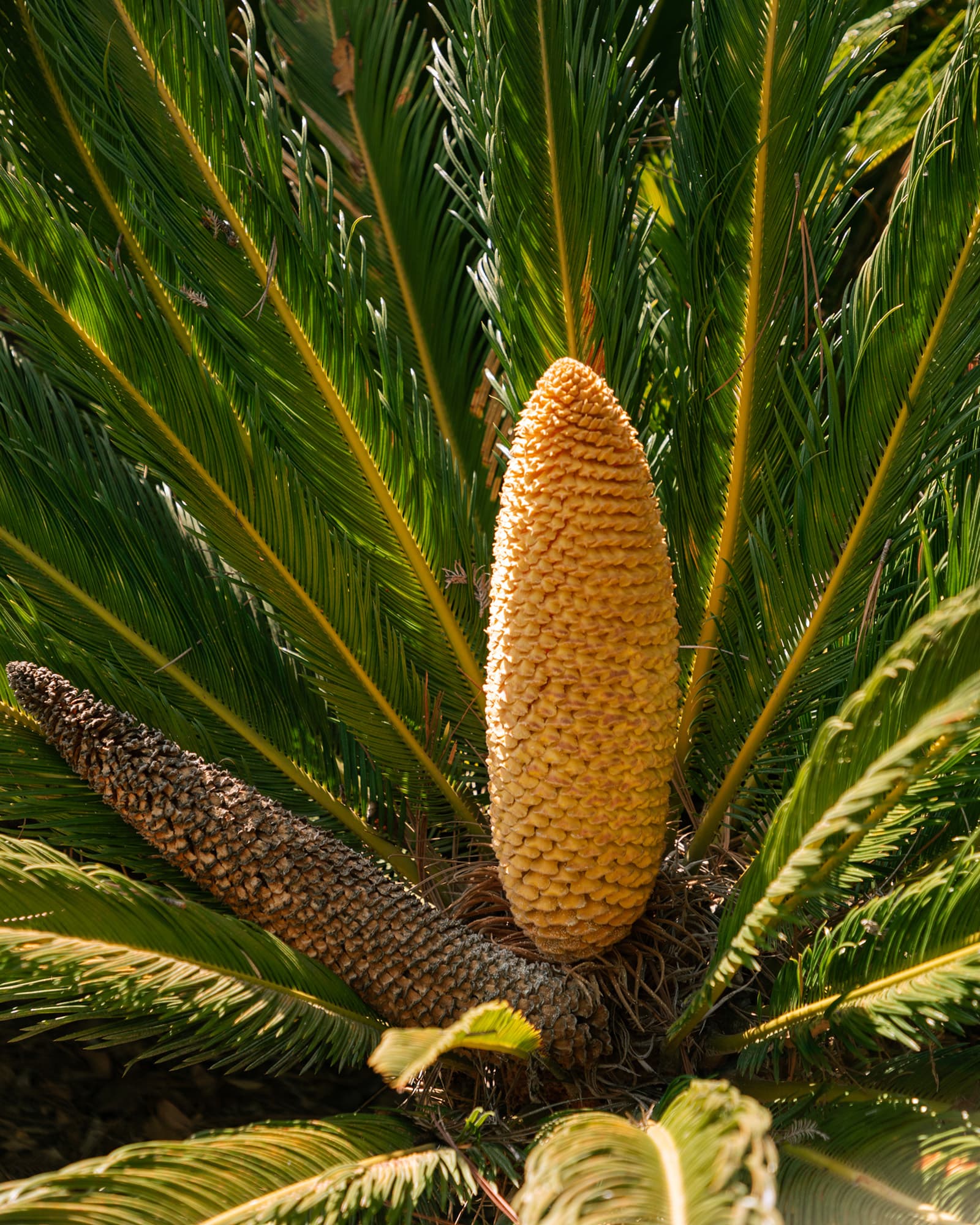
A Cycad Garden cone
It was Walska, too, who had spearheaded the creation of this explosive rose garden, the “blue garden” (so called for its blue grasses, atlas cedars, blue brahea fan palms, and agaves), the two separate orchards with more than a hundred deciduous and citrus trees, the topiaries and the shade palms and succulents, and even the Jurassic-looking Cycads, where you can find, thriving, some of the rarest and most hotly desired plants on the planet. (I’ve never quite understood the Cycad obsession myself, but it is real. And excitingly for the evidently ample cycad enthusiasts out there, the property has at least 450 specimens, almost half of the known species left in the world; five species on view are believed to be extinct in the wild.) It was this mysterious Walska, as well, who had enlisted such unorthodox garden decor as chunks of colored glass from the California-based Arrowhead water company, as well as gems and minerals and giant clam shells and small mythological statues to appear in the landscape. Amidst all the natural and expertly, expensively cultivated splendor was a sense of humor, is what I’m saying. My kind of gardener.
So at the end of my visit, I returned to the visitor center and did what I always do, which is to buy books. First I bought Ganna Walska’s autobiography, Always Room at the Top, the cover of which shows her bedecked in jewels. It did not turn out to be the most clearly written book I’ve ever read, which sort of makes sense, the more you learn about the woman who wrote it. Born Anna “Hanna” Puacz in 1887 in Brest-Litovsk, Poland, she adopted a stage name in her early twenties (Ganna was close enough to Hanna, and Walska was inspired by—sure, why not?—the waltz) in order to pursue a singing career, which then was forbidden to a woman of higher social status. She was, by her own account, embroiled in various vexing love affairs almost from the jump. She married six times, including to a Russian Count, a famed New York doctor (who fell for her because he believed she looked like Alma Mahler, who had refused him), an English inventor who claimed to have created a “death ray,” and a series of very successful American industrialists, often in very quick succession and after knowing them for a manner of days, or perhaps the length of an ocean crossing. There are multiple occasions where someone proposes marriage within hours of meeting her. (She doesn’t always say yes, or at least not often immediately.) A great beauty with extravagant tastes and a baroque love life who was seemingly undaunted by reputational scuffles, she soon became something like an early model for what we’d now call “famous for being famous.” To put it another way, the burgeoning American tabloid press particularly enjoyed her exploits.
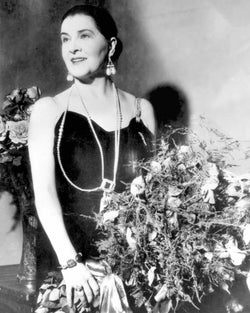
Her operatic career was not an unbridled success, though most of her husbands supported it (or gave her the means to). She sang in New York and Paris and toured across Europe and America with fabulous Erté-designed costumes, in companies she was typically footing the bills for, with decidedly mixed results when it came to the actual performances. This was due to frequent bouts of what she claimed were stage fright and stress and resulting issues with her throat, though there exist less generous interpretations of the facts, including that she was said to have been the inspiration for the tuneless but flushly backed aspiring stage star Susan Alexander in Orson Welles’ Citizen Kane. Most can agree that she was not fully in control of her instrument, though its owner believed it was for largely mental or spiritual reasons, rather than god given ones.
Walska’s star rose anyway. She split her time between her husbands’ residences in the U.S. and her estates in Paris and the French countryside, where she threw glorious, dazzling, well-attended parties. She had a rich interior life, too: her memoir relays her interests in and studies of yoga, astrology, meditation, telepathy, numerology, Christian Science, Rosicrucianism, hypnotism, and Indian philosophies, among other pursuits. She was intrigued by the broiling politics of her day, though mostly kept above the fray: she once had a private audience with Mussolini, though when she left (with an autographed photo, his typical move), all she could remember of their conversation was that he was charming. She became something of a feminist icon when she fought the U.S. government in 1928, after U.S. Customs tried to collect an import duty of $1,000,000 on her traveling wardrobe and jewels (assessed at $2,500,000). She argued for legislation that a woman’s residence was where she herself lived, not where her husband resided, and effectively won. (In the end she didn’t have to pay the taxes.) She watched the world change through WWI, the Russian Revolution of 1917, the Great Depression, WWII, and Vietnam.
Walska found her great purpose in her 60s, when she saw the tides of Europe turning towards war and in 1941 purchased the Montecito estate that would become Lotusland at the request of a young and handsome Hatha yoga-promoting charlatan named Theos Bernard, to whom she was married for three tempestuous years (because, she claimed, she felt sorry for him, which is a surprisingly frequent excuse in her marriages) before wising up. She immediately began to renovate its grounds. At first they called the estate “Tibetland,” and intended to use it to host Tibetan monks until the outbreak of WWII made that impossible. After divorcing Bernard, she replaced the swimming pool with a water garden, where now every summer blooms hundreds of pink Asian lotuses: the estate was then named “Lotusland.” The lotus has been a sacred symbol across history for the people of Egypt, India, and Asia in general, and is celebrated for an annual emergence widely interpreted as a symbol of renewal and growth, where it reaches from the mud into the open skies. It could not have felt like a more perfect emblem for Walska.
She may have grown towards the skies, but she still enjoyed her time in the dirt. Everyone who worked on the estate called her “Madame.” Over the next four decades, Walska employed a series of renowned landscape architects, beginning with Lockwood de Forest, Jr., Ralph Stevens, William Paylin, Frank Fuji, Charles Glass, Robert Foster, and stone mason Oswald de Ros, all of whom had tremendous influence and input on the estate, but she always retained the title “head gardener.” This was not in name only: she was a determinedly hands-on presence. (One popular postcard in the visitor center shows her in a pink bikini amidst the lily pads, pruning.) She worked the gardens every day, even when she developed arthritis and required two canes. She always wore her medals: an Order of Merit from Poland, and two Medals of Honor from France.
Walska was committed to amassing the best and most unusual plants possible. This was true to form. "I have a particular aversion to following the multitude in styles of any kind," she wrote in her autobiography, whether that meant amassing elaborate couture stage costumes for roles she’d never be cast in, or favoring the same slinky black dress throughout a social season that would have typically required dozens more. She had an inimitable jewelry collection—she had long had husbands with Cartier house accounts, as well as acquaintances fleeing the Russian revolution with mind-boggling jewels to sell—and a taste for “the biggest stones I could find on the market, the largest generous Nature created,” which she would buy in any existing size and color (including a Romanov sapphire and one of only two known 95-carat antique-cut yellow briolette diamonds). She auctioned many of these treasures in 1971 for the then eye-watering sum of $916,185, and used the funds to develop the cycad garden—as a result, some still call it the “million dollar garden.” (If that price seems high for plants, especially ones that produce cones, not flowers, consider that there is today a multi-million dollar illegal cycad trade: people have killed each other over these squat spiky things.) To this day, Lotusland retains one of the finest collections of cycads in the entire world.
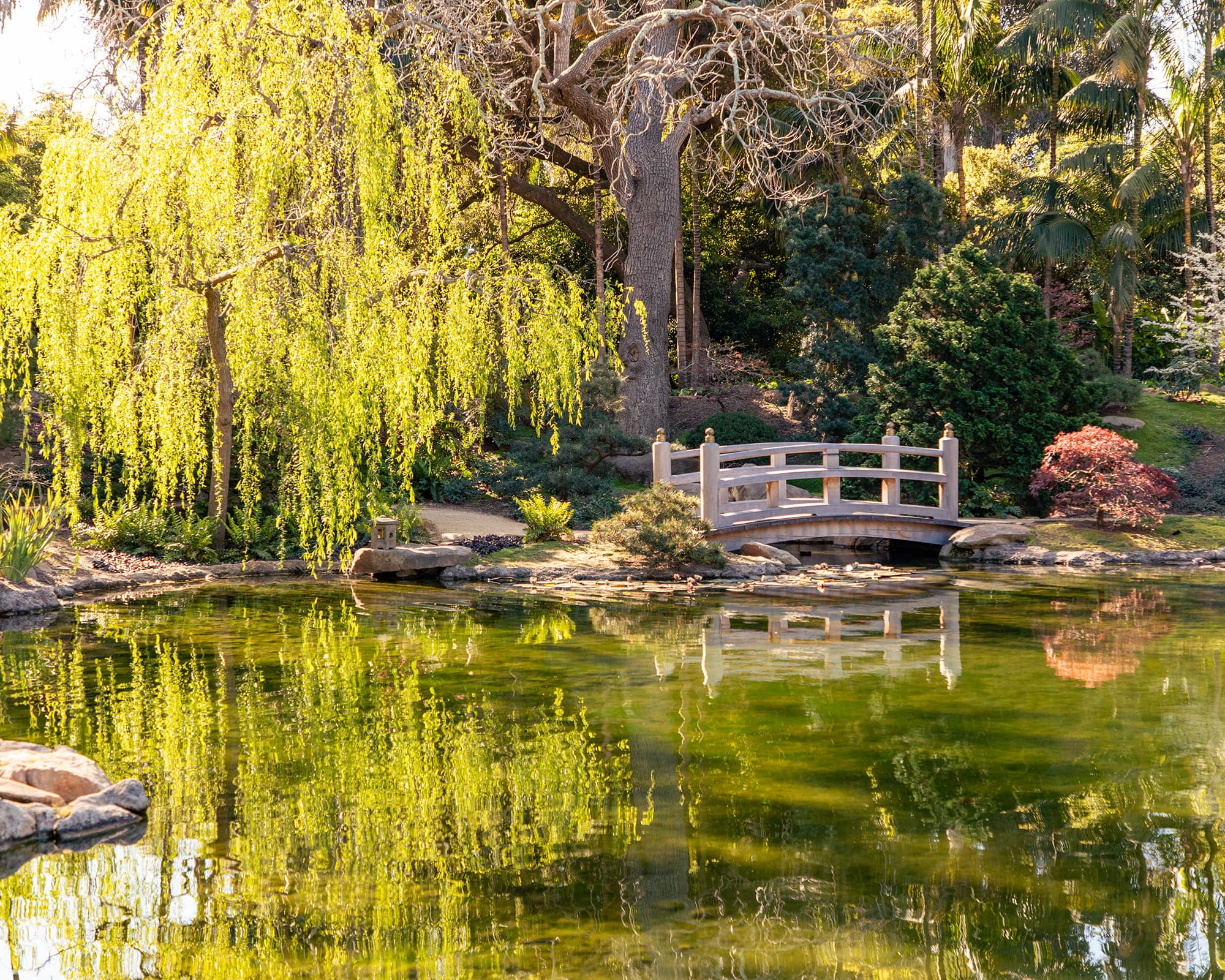
The Lotusland Japanese Garden
During her later years, Walska continued upkeep on the property—any gardener knows that the joy in it is that the work never ends—and entertained guests in fine style, among the very best of nature’s finery. She died in her late nineties (I refuse to be more specific given she never was particularly keen to commit to an age while she was alive), leaving her entire estate to the Lotusland foundation. Nine years later, in 1993, the gates opened to the public. Walking through the estate, even on a day where it is sold out, as I have now many times, the design is such that you are rarely aware of another person. What you are met with is one woman’s vision of a perfected and uninterrupted Eden, wherein she could create a lasting kind of beauty: something that would far outlive her and give her a legacy that the stage and a fascinated public and a smattering of romances never would. Put another way, Walska found the growth and purpose she had spent a lifetime seeking once she abandoned its pursuit to get her hands in the dirt.
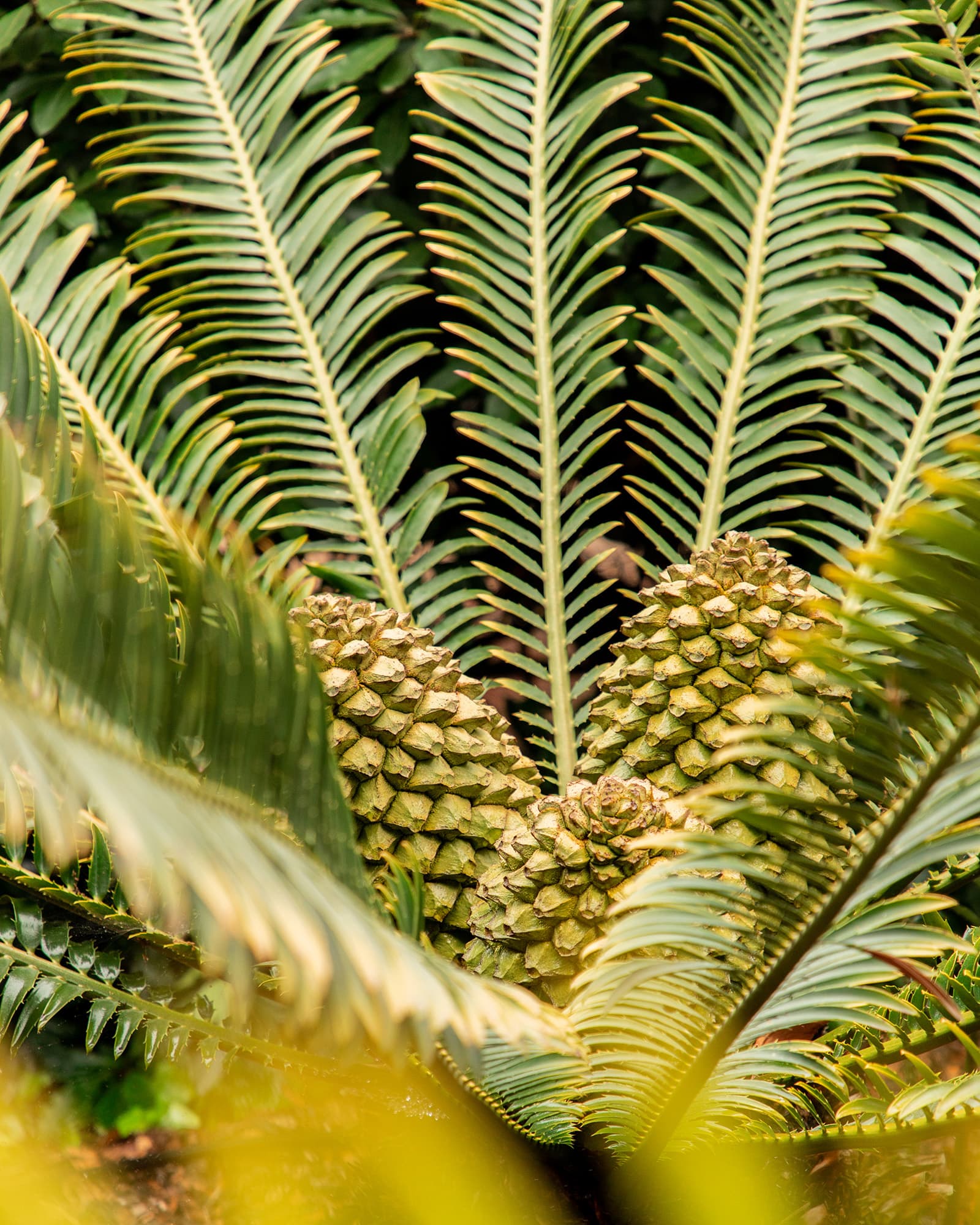

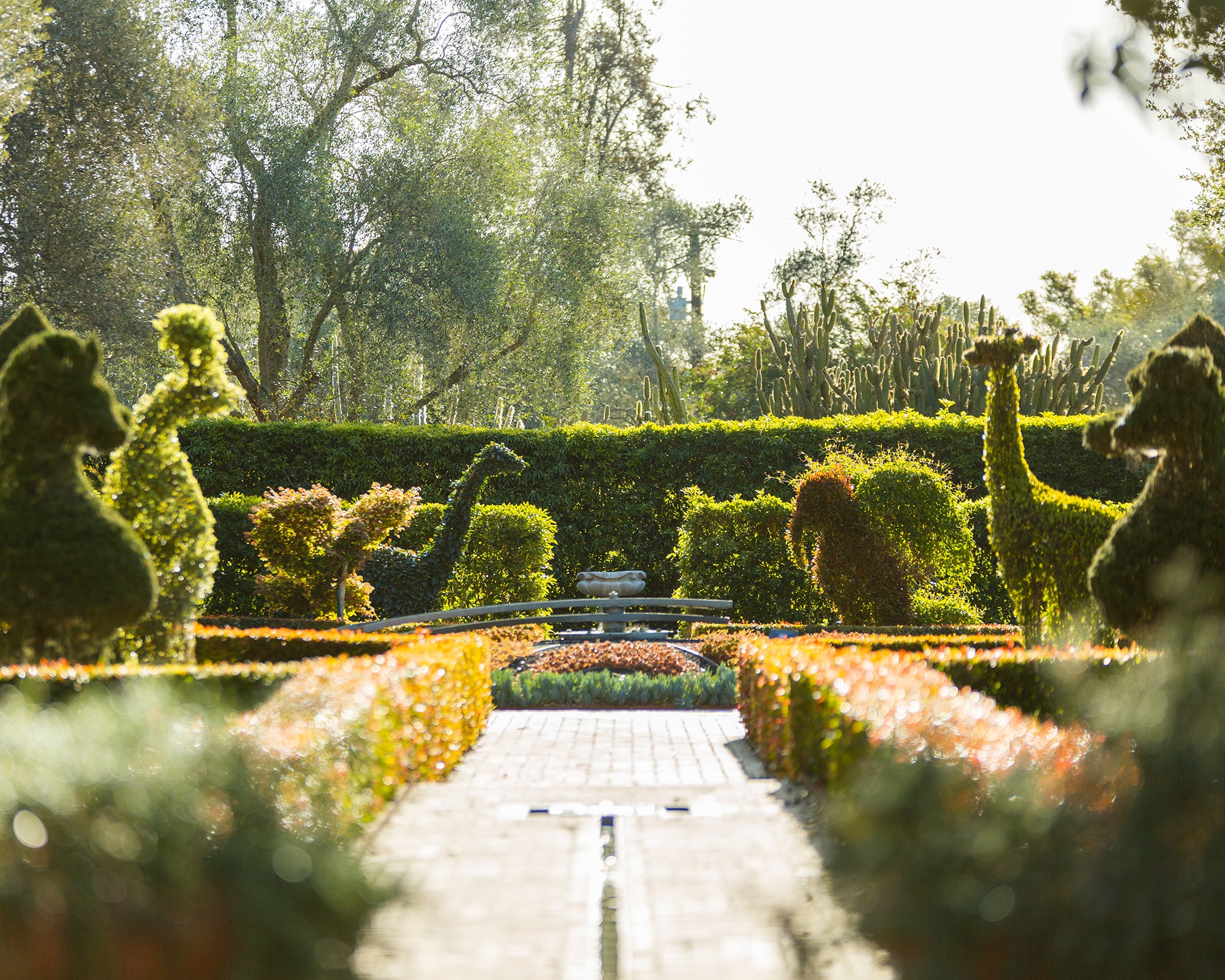
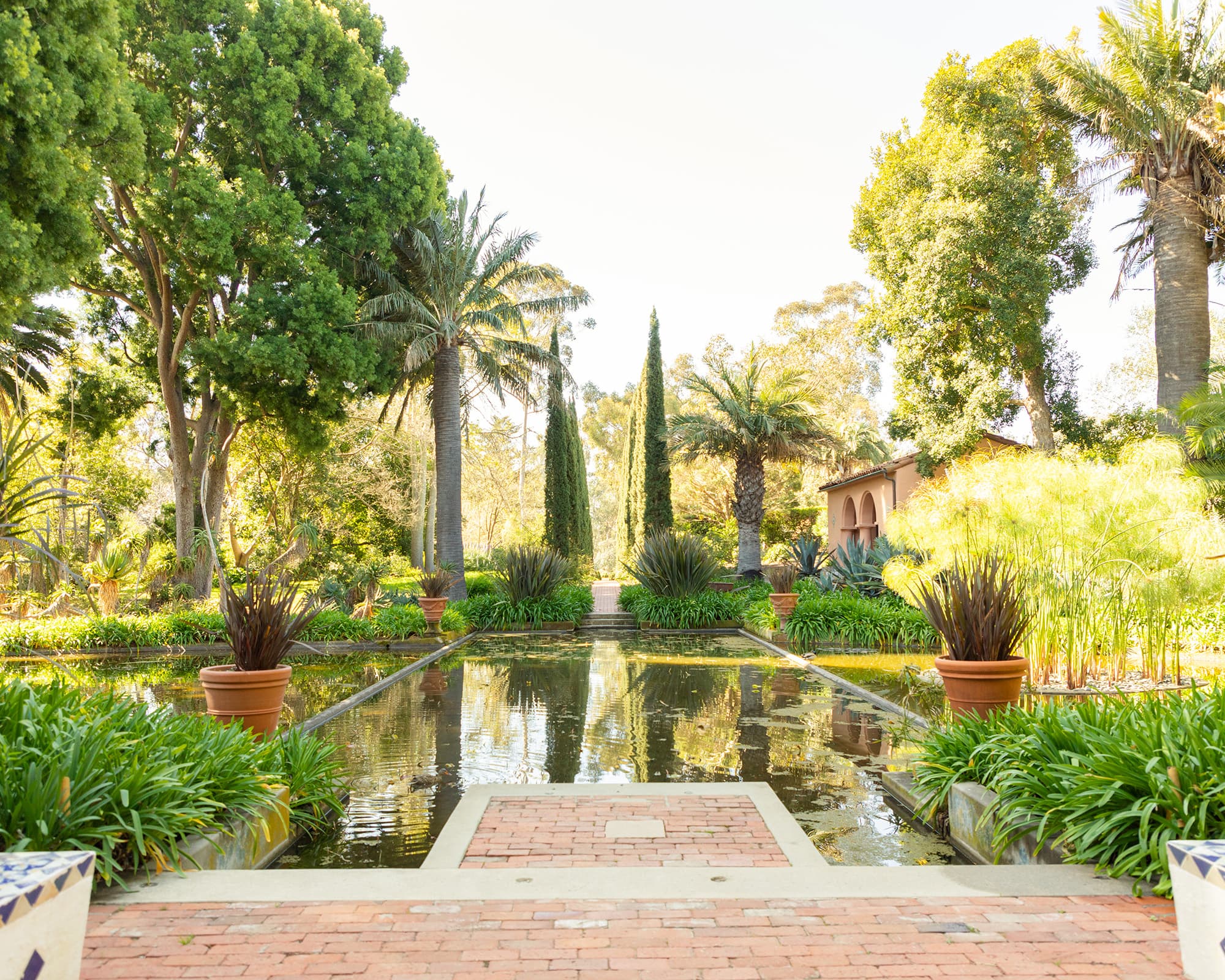
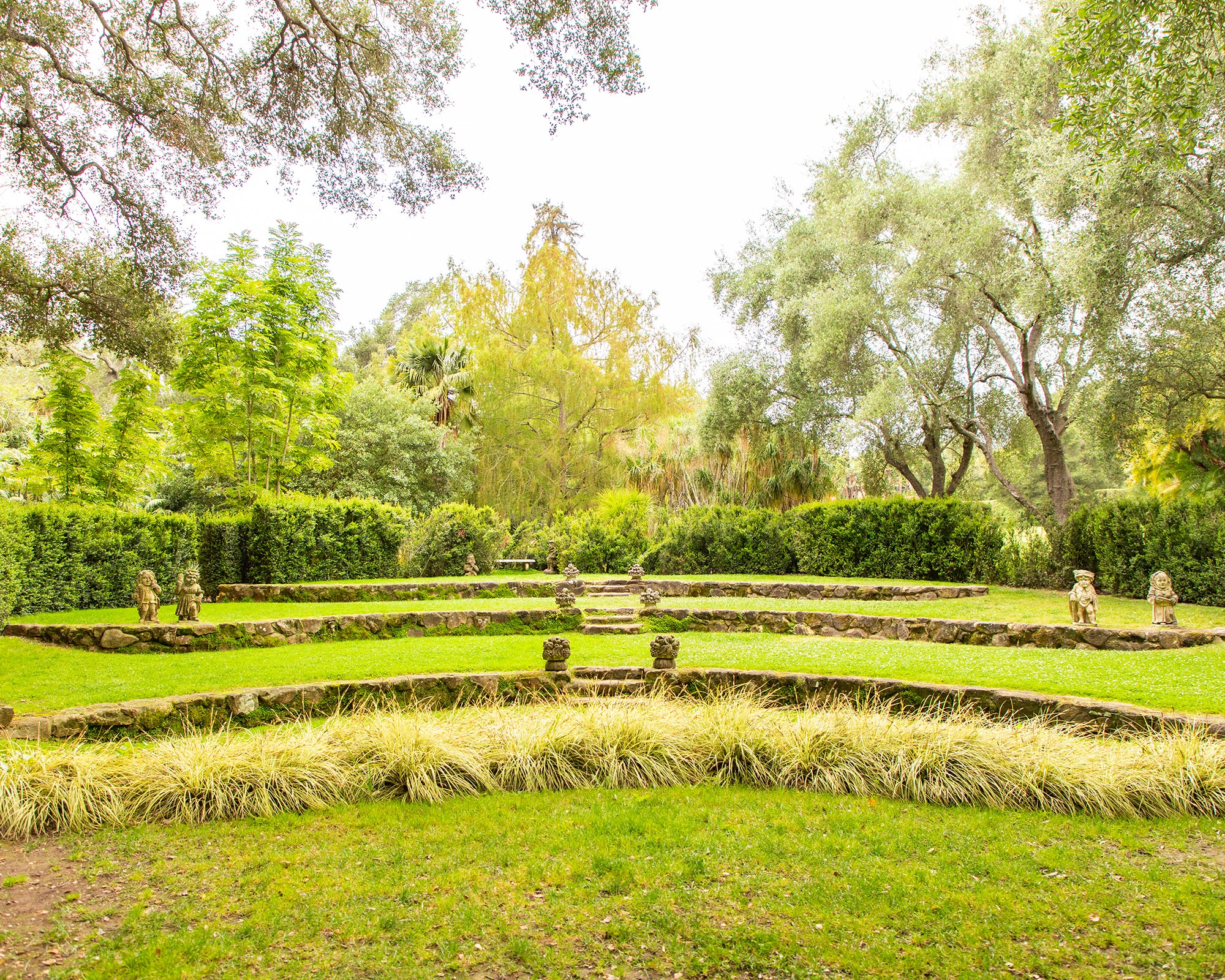
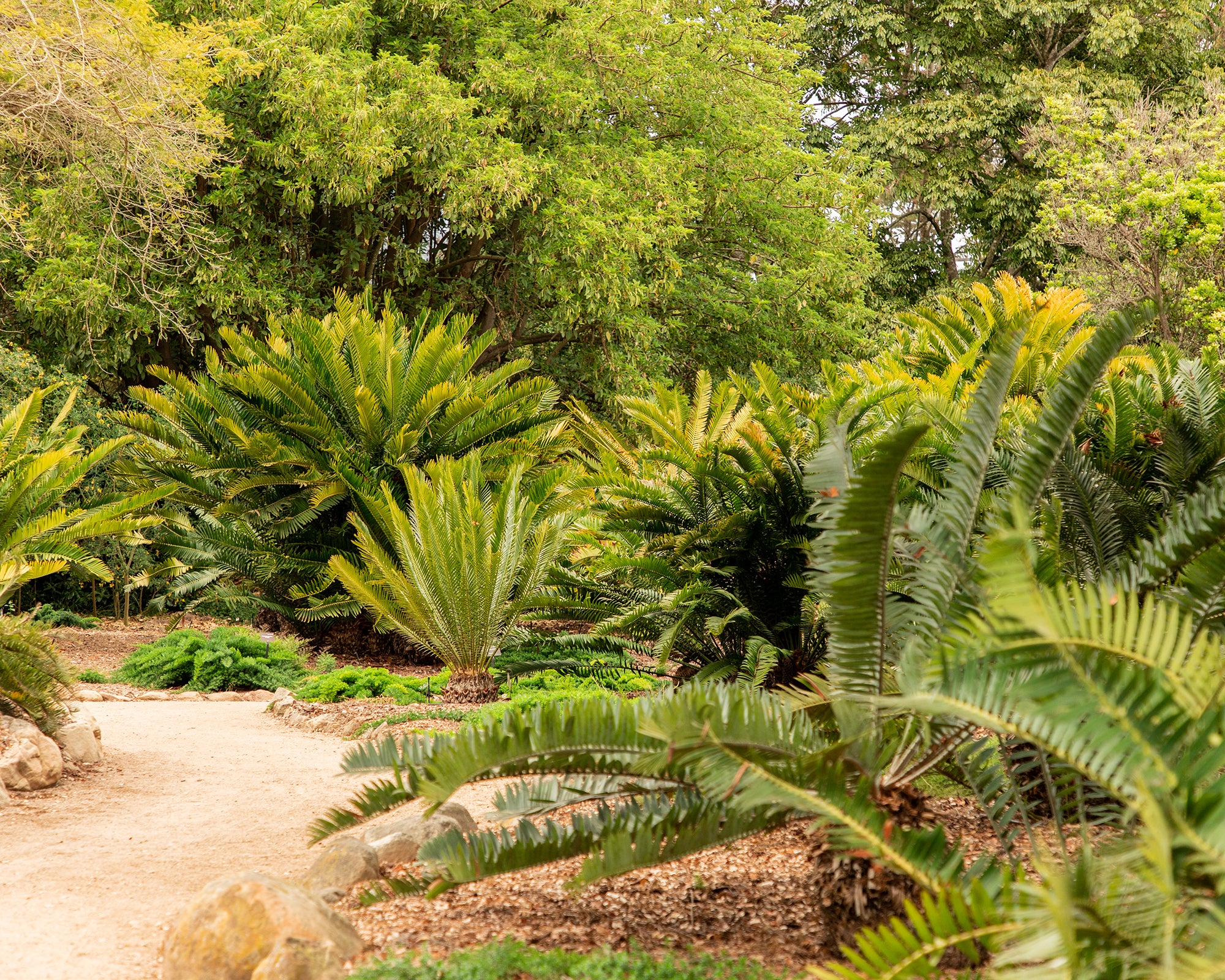
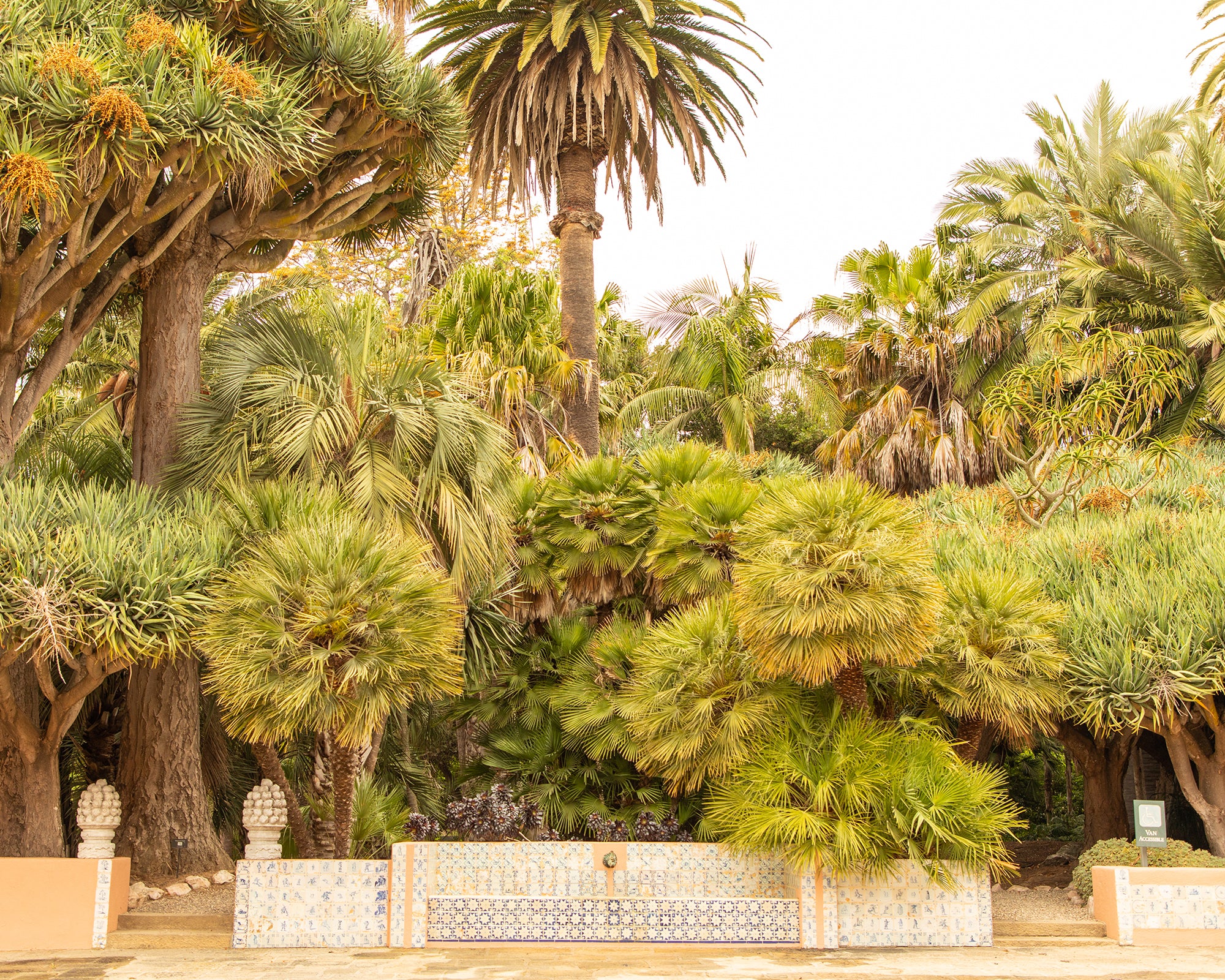







To support Lotusland and learn more about its annual Lotusland Celebrates Auction, please visit the Lotusland website.




















